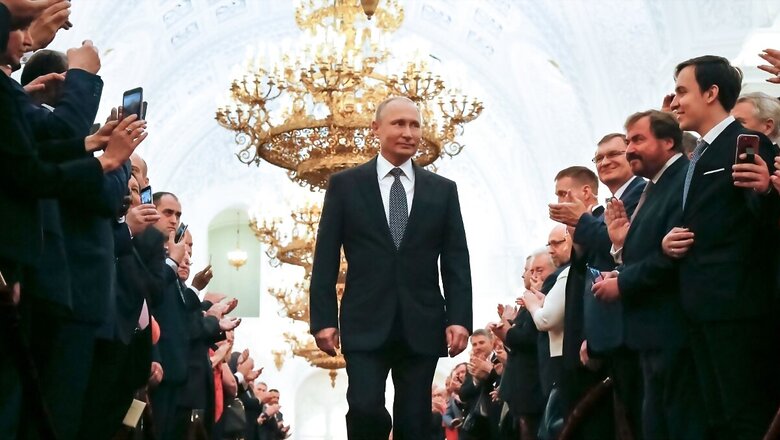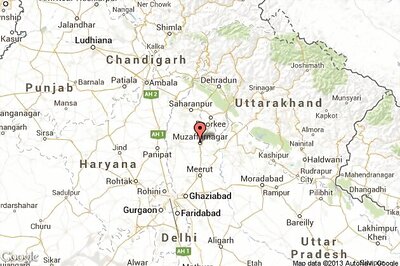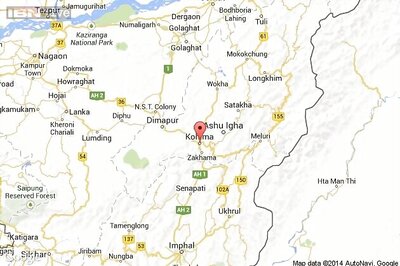
views
Hamas in Gaza, Hezbollah in Lebanon, Houthis in Yemen and several militias in Syria and Iraq. This is Iran’s “Axis of Resistance." In the last few decades, Iran has cultivated, funded and controlled these proxy militias spread across the Middle East. Now, they have a new backer: Russia.
Russia, which had formerly joined a sanctions regime against Iran for its nuclear weapons programme, has now thrown caution to the wind. Since the invasion of Ukraine in 2022, Russia has tightened its bond with Iran. Tehran is supplying drones, ammunition and missiles to keep Russia’s war machine running. But Iran seems to be lending a hand in other ways too— with its network of powerful proxy militias proving useful for Putin.
IRAN’S AXIS OF RESISTANCE
Today, Iran holds the capacity to set the Middle East on fire whenever it wants. In 1979, Iran had just witnessed an Islamic revolution and the overthrow of its pro-Western monarchy. At the driving seat of this revolution was Ruhollah Khomeini, a Shia Muslim cleric who had become the face of the deepening religious fervour of Shia Islam.
Under him, Iran welcomed a form of sharia law and turned away from everything Western— Western countries, Western allies and Western ideas. It was particularly hostile to the USA’s interests and to the existence of Israel. His ideology was contagious. And it influenced Shia Muslim communities across the Middle East. This threatened ruling dispensations across the region, including Sunni Arab leaderships along the gulf. For them, this could not go on and something had to give. In 1980, Iraq, led by Saddam Hussain, invaded Iran. Its objective? To cut off Iran’s wings and keep its raging new Shia Islamist ideology at bay. It would do this by snatching away Tehran’s prized possession— the Khuzestan region, which is where almost all of Iran’s oil comes from. This is the source of Iran’s riches and therefore its power.
The new Iranian republic’s first military test was also Iran’s single greatest threat to its existence. The war was a brutal one. It raged on for eight years.
Never had Iran found itself so isolated and vulnerable. Iraq had geographical advantages. It was richer. It was technologically superior. And it had the backing of the West as well as regional support from several Arab nations and Israel.
Iran’s retaliation was powerful, but restricted by an international trade embargo. By the time the war ended in a stalemate, over a million lives had been lost. Two-thirds of them were Iranians, who lay dead in cities completely exposed to Iraqi missiles. At the end of it, Iran said, Never Again.
Hence was born what eventually evolved into the military doctrine of “forward defence". It dictated that Iran should fight its enemies outside of its borders to keep war from ever reaching its doorsteps. Its executor is the Islamic Revolutionary Guard Corps or IRGC, and particularly the Quds force which is in charge of foreign military operations for Iran– the same Quds force famous for its former commander Qasem Soleimani, who was assassinated by the United States in Iraq.
By 2012, the doctrine of forward defence was clear as day. Iran focused on naval guerrilla warfare, cyber warfare, drones and most importantly, proxies— militias and political groups in Iraq, Syria, Lebanon, Gaza and Yemen. The most powerful among them is Hezbollah, a powerful Shia militant group in Lebanon. Not only is it heavily armed and comprises tens of thousands of fighters, but it is also a dominant political force in Lebanon with significant control over its government. Its control is so strong over parts of Lebanon that it is known for running a state within a state. It seeks the obliteration of Israel and its loyalty to Iran is unmatched. Next up, Hamas and the Palestinian Islamic Jihad in Gaza. Hamas is the supreme political and military authority in the Gaza Strip. Despite belonging to the Sunni sect of Islam, Hamas has a patron in Shia Islamic Iran. Then there are the Houthis in Yemen. Under the flag of a political and military movement rooted in Zaydi Islam, a sect within Shia Islam, the Houthis have been fighting a civil war since 2014 against a government backed by Saudi Arabia, the UAE and their Western allies like the US. Iran is said to have armed the Houthis with long-range ballistic and cruise missiles and sophisticated drones and helped them build a naval guerrilla force. The Houthis wield tremendous power today as they control a large part of Yemen’s western flank bordering on the Red Sea, where they have been attacking a large number of ships threatening 15% of global seaborne trade. The Houthis have forced most shipping companies to take a much longer route around southern Africa. Another major force is the PMF or the Popular Mobilisation Forces in Iraq which were initially formed to fight off ISIS. Iran backs many more Shia militias stretching from Syria and Bahrain to Afghanistan and even Pakistan.
Today, this network of militias is proving itself to be a formidable force of disruption in the Middle East. They have united and are coordinating their actions in a game of geopolitical chess. The axis of resistance works like an informal alliance. While these groups arise out of different domestic reasons, they seek three core objectives in unison— to protect Iranian interests, obliterate Israel, and end American presence in the Middle East.
And it’s this last core element that Russia wants to cash in on. You see, they all share a common enemy— the United States of America.
MOSCOW CALLING: RUSSIA’S LINK WITH IRAN’S PROXIES
On October 7, 2023, thousands of heavily armed Hamas terrorists crossed over into Israel and executed a gruesome attack that triggered a war that continues to rage till this day. Since mostly civilians were targeted in this attack, and Israel had remained somewhat friendly towards Moscow, Russia was expected to condemn Hamas. But instead, Russia has been leading the charge against Israel at the United Nations and has drawn closer to Hamas and other Palestinian groups, even inviting their leaders to the Kremlin.
On March 2, a Hamas delegation met Russia’s special envoy for the Middle East and North Africa, Mikhail Bogdanov, in Moscow. Hamas thanked Russia for “its position in support of the Palestinian people". This came after Russia invited around 14 Palestinian groups for a meeting. These include two prominent forces at war with Israel and backed by Iran— Hamas and the Palestinian Islamic Jihad or PIJ. Palestinian groups are a divided lot, split between the radical tactics of Hamas and the moderate approach of Fatah, the ruling power in the West Bank. The Kremlin is promoting an “inter-Palestinian dialogue" to bring these feuding groups together. Russia’s goal is to present a united Palestinian front and build pressure on Israel and the US. Siding with the axis of resistance also helps Vladimir Putin flaunt his geopolitical clout in the Middle East and boost Russia’s standing in the Islamic world— all at the cost of the US. And for now, this approach is working.
Russia has vociferously backed Hamas at the United Nations and is waging a diplomatic onslaught on Israel for its actions in Gaza. It angrily opposed the US and UK’s first strikes on Houthis this year in retaliation to attacks in the Red Sea. Soon, the Houthis promised safe passage to Russian ships and a Houthi delegation was even hosted by Moscow to engage with the Russian foreign ministry.
What’s more? Russia’s support for the axis of resistance against Israel may go further than just lip service. Russia has pumped up electronic jamming from its Khmeimim base in western Syria, impacting Israel’s commercial air routes. Furthermore, Russian pilots have resumed aerial patrols along the Israeli-Syrian disengagement line in the Golan Heights after a one-year pause. It is also drawing closer to Hezbollah supplying it with weapons including anti-ship missiles. In fact, the US fears that Russia’s Wagner Group may be supplying air defence systems to Hezbollah.
This is bad news for Israel. Russia’s relations with Israel are at their lowest point. But this was not always the case. For long, Russia maintained neutrality in the Israel-Palestine issue. Russia has a sizeable Jewish population and 15% of Israel’s population speaks Russian. Putin has often deemed Israel as a “special state" to Russia. Meanwhile, despite its closeness with the US, Israel has long maintained balanced relations with the Kremlin and tries not to cross its red lines. In the fallout of the Ukraine war, Israel refused to send weapons to Ukraine or even to join in on the sanctions against Russia. Israel does not want Russia as its enemy. Because if Moscow steps up financial, military and intelligence support to Iran’s proxy groups, Israel’s security calculus will fall apart.
This is a dangerous proposition and shows how the US-Russia rivalry has turned into a zero-sum game. It’s a warning aimed to put pressure on Israel’s all-weather ally, the US, to give concessions to Russia elsewhere. And where could such concessions possibly be? It’s Ukraine— where all Putin needs is for Zelensky to kneel and the US to back off.



















Comments
0 comment